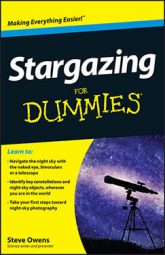Stargazing can keep you busy all year long, with more than 88 constellations visible in the sky, from the big bright obvious ones like Orion the Hunter, to the tiny faint hard-to-spot ones like Mensa the Table. Many are best seen during specific seasons of the year.
Stargazing: Constellations of December, January and February
The constellations in the following map are best seen in the months of December, January and February. Northern hemisphere stargazers may only be able to see the constellations at the top of this chart, while southern hemisphere stargazers may only be able to see those at the bottom. The horizon line marked in the figure shows what a stargazer at mid-northern latitudes sees.
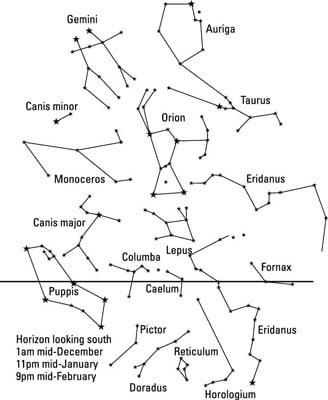
Winter constellations include the following:
Orion
Canis Major
Canis Minor
Auriga
Gemini
Taurus
Lepus
Monoceros
Puppis
Caelum
Columba
Eridanus
Fornax
Horologium
Pictor
Reticulum
Stargazing: Constellations of March, April and May
In the months of March, April and May, a parade of animals are on display, including zodiac constellations like Leo the Lion and Cancer the Crab. Northern skies are illuminated by Boötes the Herdsman, marked out by the bright star Arcturus, the fourth brightest in the night sky.
In southern skies you see the mighty Centaurus, half man, half horse, whose front foot is α Centauri, also known as Rigel Kentaurus, the closest bright star to the Sun and the third brightest in the night sky.
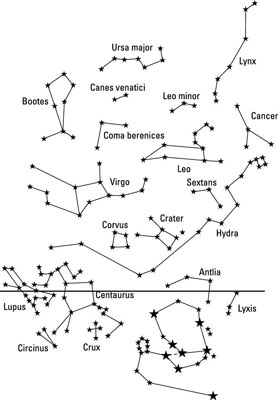
The spring constellations include:
Boötes
Centaurus
Carina
Vela
Cancer
Corvus
Crater
Leo
Virgo
Antlia
Canes Venatici
Coma Berenices
Hydra
Leo Minor
Lupus
Lynx
Pyxis
Sextans
Stargazing: Constellations of June, July and August
The summer constellations are best seen in the months of June, July and August. A map of these constellations is shown in the following chart. The horizon line marked in the figure shows what a stargazer at mid-northern latitudes will see.
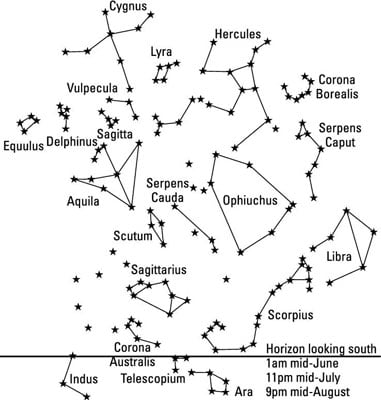
The summer constellations include the following:
Cygnus
Scorpius
Sagittarius
Aquila
Hercules
Ara
Corona Australis
Corona Borealis
Delphinus
Equuleus
Indus
Libra
Lyra
Ophiuchus
Scutum
Serpens
Serpens Caput
Serpens Cauda
Sagitta
Telescopium
Vulpecula
Northern hemisphere stargazers may only be able to see the constellations at the top of this chart, while southern hemisphere stargazers may only be able to see those at the bottom.
Stargazing: Constellations of September, October and November
The stars of Andromeda, Perseus and Pegasus dominate the skies during September, October and November for most stargazers, except those south of around 30 degrees south. Andromeda features one of the best faint fuzzies in the sky, the Andromeda Galaxy.
Northern hemisphere stargazers may only be able to see the constellations at the top of this chart, while southern hemisphere stargazers may only be able to see those at the bottom. The horizon line marked in the figure shows what a stargazer at mid-northern latitudes will see.
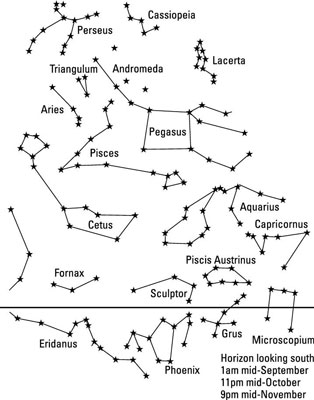
The autumn constellations include the following:
Andromeda
Pegasus
Perseus
Aquarius
Aries
Capricornus
Cetus
Grus
Lacerta
Microscopium
Phoenix
Pisces
Piscis Austrinus
Sculptor
Triangulum

